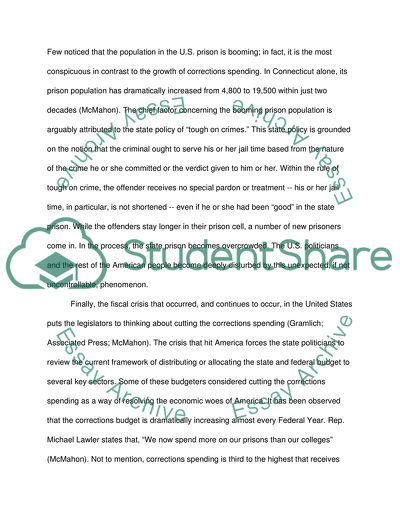Cite this document
(Resolving the Fiscal Crisis in the United States: Cutting the Research Paper, n.d.)
Resolving the Fiscal Crisis in the United States: Cutting the Research Paper. Retrieved from https://studentshare.org/social-science/1743815-should-states-release-prisoners-early-to-cut-spiraling-corrections-spending-and-alleviate-budget-shortages-or-would-doing-so-pose-a-threat-to-public-safety-and-undermine-the-judicial-system
Resolving the Fiscal Crisis in the United States: Cutting the Research Paper. Retrieved from https://studentshare.org/social-science/1743815-should-states-release-prisoners-early-to-cut-spiraling-corrections-spending-and-alleviate-budget-shortages-or-would-doing-so-pose-a-threat-to-public-safety-and-undermine-the-judicial-system
(Resolving the Fiscal Crisis in the United States: Cutting the Research Paper)
Resolving the Fiscal Crisis in the United States: Cutting the Research Paper. https://studentshare.org/social-science/1743815-should-states-release-prisoners-early-to-cut-spiraling-corrections-spending-and-alleviate-budget-shortages-or-would-doing-so-pose-a-threat-to-public-safety-and-undermine-the-judicial-system.
Resolving the Fiscal Crisis in the United States: Cutting the Research Paper. https://studentshare.org/social-science/1743815-should-states-release-prisoners-early-to-cut-spiraling-corrections-spending-and-alleviate-budget-shortages-or-would-doing-so-pose-a-threat-to-public-safety-and-undermine-the-judicial-system.
“Resolving the Fiscal Crisis in the United States: Cutting the Research Paper”, n.d. https://studentshare.org/social-science/1743815-should-states-release-prisoners-early-to-cut-spiraling-corrections-spending-and-alleviate-budget-shortages-or-would-doing-so-pose-a-threat-to-public-safety-and-undermine-the-judicial-system.


